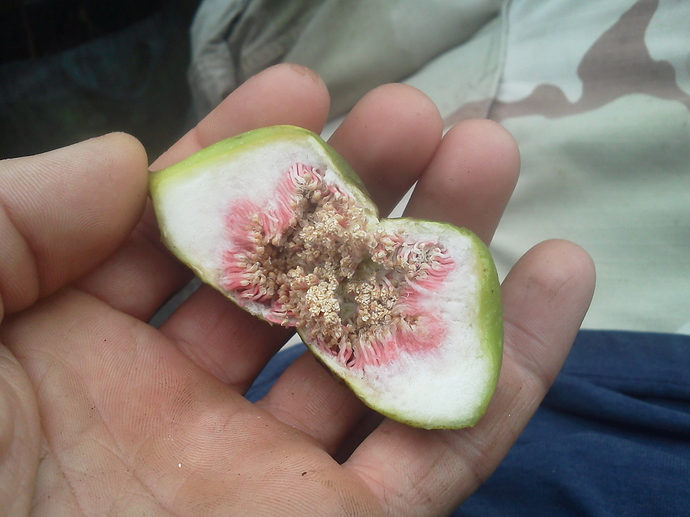Edible carpifigs like normal carpifigs are male, well in a way they are, edible carpifigs have a persistent breba crop.
With an edible caprifig the female flowers for it’s breba crop are fully developed and fully functional, they too of course have fully functional male flowers as does the regular carpifigs so in a sense the flowers of the breba crop they pollinate each other. The main crop of an edible caprifig is often a normal caprifig, if pollinated still can be inedible to humans, regardless they usually do not abort and can be food for insects, pests, and sometimes even fed to live stock if inedible to humans, yet some varieties of edible caprifigs do have an edible main crop that can be eaten fresh by people.
Unlike the edible caprifig, normal carpifigs despite having both male and female flowers can not be pollinated successfully, due to the female flowers not being fully developed.
Based upon what I have learned about Gillette through my research on them I believe that there is only a second crop if the first crop is pollinated by the pollen of another fig variety (maybe somewhat of a pollen incompatibly?), if a Gillette fig tree produces a second crop then most if not all of the second crop figs should stay on the tree until ripe, edible or not.
I am sure that you have heard about Kiwibob at one point or another, he’s an expert of Gillette growing in the PNW, he says that the second crop of the Gillette variety fully ripens in the warmer parts of the PNW because the cooler parts of the PNW has too short of a season for them to fully ripen. I will message you his photos for the fruit from his Gillette, since they are his photos, those are the best photos of the Gillette fruit that I have ever seen (first crop of course), I see stamens on the fruit in those photos, yet they are a little blurry and a little hard to see.
I have a real Croisic (aka Gillette) yet it has not produced yet due to frost and beetle damage to the tree, yet last winter it showed way greater cold resistance and it’s supposed to be more cold resistant in our climate than it was last winter. Yet it’s only been in the ground almost 4 seasons, and it’s looking much better this year than any other year despite the tree seeing it’s coldest winter ever last winter, so I am not worried.
I also have Gillette (MWamsley) which I am very doubtful, strongly doubtful that it’s really Gillette, although there are a lot of similarities between it and Gillette, I see way too many differences, unless 8 years and 4 months later it’s still refusing to act like it should unlike our Croisic that from the start was exactly like Gillette is supposed to be, well our Croisic has not fruited yet, yet everything else has been proven to be just the way it should be!
As far as the Gillette (MWamsley) follow the following link, that and the 2 posts under that post all have great enlarged photos of the fruit from our Gillette (MWamsley), you can see the stamens in the photos of the first and of the 3rd post, especially in the 3rd post, our Gillette (MWamsley) has never even started producing a second crop.
https://foodplace.info/Bountiful_Figs/viewtopic.php?f=24&t=134&start=72#p6032














